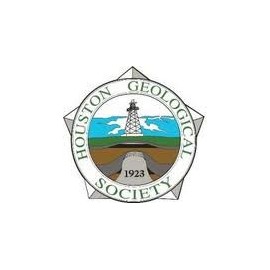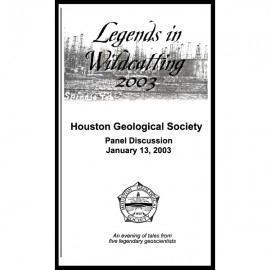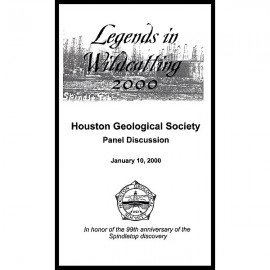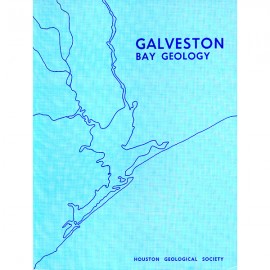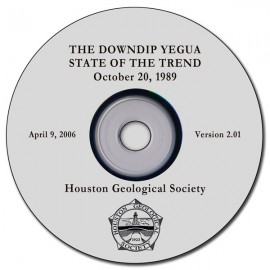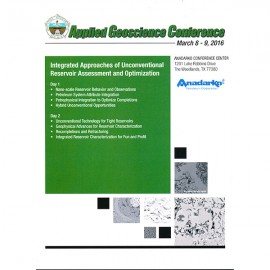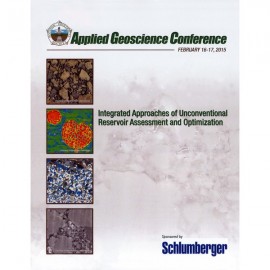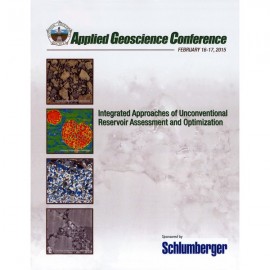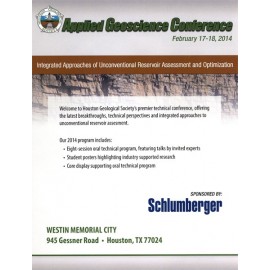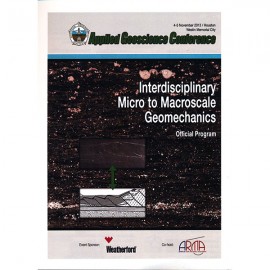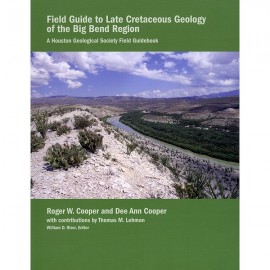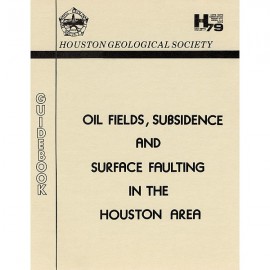Houston's geologists have seen the petroleum industry's progress almost from its infancy and have contributed in a large way to that progress. The first commercial geologic department in the United States devoted to the winning of oil from the earth was founded in Houston in 1897 for the Southern Pacific by the great pioneer geologist Dr. Edwin ...
Houston's geologists have seen the petroleum industry's progress almost from its infancy and have contributed in a large way to that progress. The first commercial geologic department in the United States devoted to the winning of oil from the earth was founded in Houston in 1897 for the Southern Pacific by the great pioneer geologist Dr. Edwin T. Dumble. With the discovery of Spindletop near Beaumont on January 10, 1901, the Texas oil boom started in earnest and the stage was set for the geologists of Houston. The early geologists met for lunch and in January 1920 they organized into a special group. This organization was short lived and in the summer of 1923, at the invitation of Donald C. Barton of the Rycade Oil Corporation, Houston geologists began meeting for lunch on the first Friday of each month. Alexander Deussen and Wallace E. Pratt, each a past president of the American Association of Petroleum Geologists, suggested that Houston host the ninth annual meeting of AAPG in 1924. At the August 1923 monthly meeting, this matter was discussed and it was a unanimous decision to extend the invitation. A viable professional organization was necessary to prepare for this meeting and as a result, the Houston Geological Society was formally chartered on August 8, 1923, with John R. Suman as president and David Donoghue as secretary-treasurer. At this time there were 74 geologists in and near Houston and all were elected charter members of the Society. On April 15, 1975, the Society was incorporated under the laws of the State of Texas with 2,217 active and honorary members. Membership today is near 4,300 members. Visit us at http://www.hgs.org/
Houston Geological Society
-
Legends in Wildcatting 2003 Legends in Wildcatting 2003
$10.00Wildcatting 2003, Moderated by Charles Sternbach; produced and directed by Kara C. Bennett and featuring special guest Michel T. Halbouty and panelists Bill Barrett, Thomas D. Barrow, Marvin Davis, and Robbie Gries. Print Wildcatting 2003, Moderated by...
In Stock -
Legends in Wildcatting 2000 Legends in Wildcatting 2000
$10.00Legends in Wildcatting 2000. Moderated by Charles Sternbach; produced and directed by Kara C. Bennett and featuring panelists Marlan W. Downey, Joe B. Foster, George P. Mitchell, John N. Seitz, and Gene Van Dyke. Print Legends in Wildcatting 2000....
In Stock -
Africa: What's Next? Africa: What's Next?
$10.00Africa: What's Next? The 15th HGS-PESGB Conference on African E&P, September 2016. Proceedings Volume, 127 p., 2016. Print Africa: What's Next? The 15th...
In Stock -
Holocene Geology of the Galveston Bay Area Holocene Geology of the Galveston Bay Area
$5.00Holocene Geology of the Galveston Bay Area. Print Holocene Geology of the Galveston Bay...
In Stock -
The Downdip Yegua, State of the Fault,... The Downdip Yegua, State of the Fault,...
$10.00The Downdip Yegua, State of the Fault, 1989. CD-ROM format only. HGS CD1. Print The Downdip Yegua, State of the...
In Stock -
Integrated Approaches of Unconventional... Integrated Approaches of Unconventional...
$70.00Integrated Approaches of Unconventional Assessment and Optimization, 2016. Proceedings Volume. Print Integrated Approaches of...
In Stock -
Geomechanics in Unconventionals Geomechanics in Unconventionals
$10.00Geomechanics in Unconventionals. Houston Geological Society Applied Geoscience Conference, May 18, 2015, sponsored by Trican Geological Solutions. 64 p. Print Geomechanics in Unconventionals....
In Stock -
Integrated Approaches of Unconventional... Integrated Approaches of Unconventional...
$10.00Integrated Approaches of Unconventional Reservoir Assessment and Optimization, 2015. Houston Geological Society Applied Geoscience Conference, February 16-17, 2015, sponsored by Schlumberger. 100 p. Book. Print Integrated Approaches of...
In Stock -
Integrated Approaches of Unconventional... Integrated Approaches of Unconventional...
$10.00Integrated Approaches of Unconventional Reservoir Assessment and Optimization. Abstracts of technical program and student poster presentations highlighting industry-supported research. Coilbound, full color, 115 p. Print Integrated Approaches of...
In Stock -
Interdisciplinary Micro to Macroscale... Interdisciplinary Micro to Macroscale...
$35.00Interdisciplinary Micro to Macroscale Geomechanics: Official Program. Coilbound book, 83 p. , 2013. Print Interdisciplinary Micro to Macroscale...
In Stock -
Field Guide to Late Cretaceous... Field Guide to Late Cretaceous...
$22.00Field Guide to Late Cretaceous Geology of the Big Bend Region: A Houston Geological Society Field Guidebook, by R. W. Cooper and D. A. Cooper, with contributions by T. M. Lehman. W. D. Rizer, Editor. Coilbound, 94 p., 1 color foldout, 1 oversize color plate in pocket in text. 2014. ISBN 978-0-9915549-0-4. Print Field Guide to Late Cretaceous...
In Stock -
Oil Fields, Subsidence, and Surface... Oil Fields, Subsidence, and Surface...
$3.00Oil Fields, Subsidence, and Surface Faulting in the Houston Area, by M. M. Sheets. 1979. HGS 203G. Print Oil Fields, Subsidence, and Surface...
In Stock
